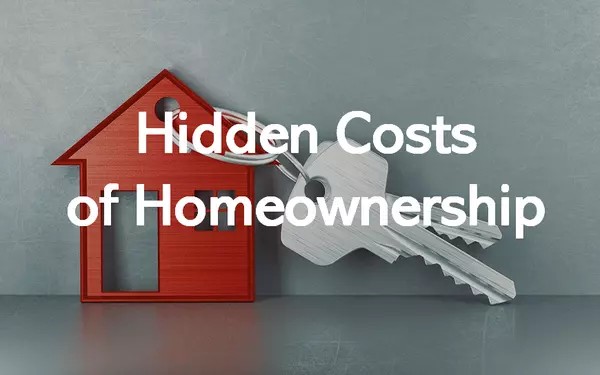When embarking on the exciting journey of homeownership, many first-time buyers meticulously calculate their mortgage payments, often overlooking a constellation of additional expenses that can significantly inflate the true cost of owning a home. These “hidden costs” aren’t always immediately obvious during the purchase process, yet they form a substantial part of the financial commitment, capable of surprising even seasoned homeowners. Understanding these often-overlooked expenditures from the outset is crucial for budgeting realistically and preventing financial strain down the line, transforming the dream of homeownership into a sustainable reality.
### The Upfront Surprises: Closing Costs and Initial Fees
The first major wave of hidden costs typically hits even before you receive the keys: **closing costs**. These are the various fees and charges associated with finalizing the mortgage and transferring property ownership. While often rolled into the loan or paid upfront, they can easily amount to **2% to 5% of the loan amount**, a significant sum for most buyers. This umbrella term includes a range of expenses such as loan origination fees, appraisal fees, title insurance, attorney fees, recording fees, and property taxes or homeowner’s insurance premiums paid in advance. A $300,000 home, for instance, could come with $6,000 to $15,000 in closing costs, an expense that often catches buyers off guard if not adequately prepared for.
Beyond closing costs, new homeowners often face **initial setup expenses**. This might include the cost of immediate repairs or renovations to make the home livable or desirable, even in properties marketed as “move-in ready.” There could be professional inspection costs, moving expenses, or the sudden need for new appliances or furniture that perfectly fit the new space. These initial outlays, though seemingly minor individually, can quickly accumulate, creating a significant drain on savings right after a major purchase.
***
### Ongoing Operational Expenses: More Than Just the Mortgage
Once settled in, the true recurring hidden costs begin to surface, extending far beyond the principal and interest of your mortgage payment. **Property taxes** are a non-negotiable annual expense, varying widely based on location, property value, and local government needs. These taxes can fluctuate and increase over time, impacting your monthly escrow payment. A sudden reassessment of your property’s value can lead to a surprising jump in this recurring cost.
Similarly, **homeowner’s insurance** is mandatory for anyone with a mortgage and covers damages from perils like fire, theft, or natural disasters. While a necessary protection, premiums can vary based on location (e.g., coastal areas prone to hurricanes), the age and condition of the home, and your claims history. These premiums can also rise annually, adding to the ongoing financial commitment. Beyond basic homeowner’s insurance, some areas may require additional coverage, such as **flood insurance**, which adds another layer of cost.
—
### The Inevitable: Maintenance, Repairs, and Utilities
Perhaps the most significant and unpredictable hidden costs stem from **maintenance and repairs**. Unlike renting, where the landlord handles burst pipes or a failing furnace, a homeowner is solely responsible for every repair, big or small. Experts often advise budgeting **1% to 4% of the home’s value annually** for maintenance. This means a $300,000 home might require $3,000 to $12,000 per year for upkeep. This includes routine tasks like gutter cleaning, lawn care, pest control, and HVAC servicing, as well as unexpected emergencies like a leaky roof, a broken water heater, or foundation issues. A major repair can easily cost thousands, if not tens of thousands, of dollars.
**Utilities** also often see a substantial increase compared to renting. Larger homes typically mean higher heating, cooling, and electricity bills. Older homes, in particular, may have less efficient insulation, windows, and appliances, leading to surprisingly high utility consumption. Additionally, homeowners often incur costs for services they might not have paid for as renters, such as trash collection, water, sewer, and potentially even HOA (Homeowners Association) fees if living in a planned community, which cover shared amenities and common area maintenance. These **HOA fees** can range from tens to hundreds of dollars monthly and can increase over time.
—
### Long-Term Investments and Opportunity Costs
Beyond the immediate financial outlays, there are more subtle, long-term hidden costs. **Home improvements and renovations**, while often increasing property value, represent significant investments of capital and time. Even if not for immediate repair, homeowners often choose to update kitchens, bathrooms, or add extensions, driven by a desire for personalization or an eye toward future resale value. These projects, while potentially rewarding, can quickly run into five or six figures.
Finally, there’s the **opportunity cost** of the capital tied up in your home. The money used for a down payment, closing costs, and ongoing maintenance is capital that could have been invested elsewhere, potentially generating returns. While home equity can grow over time, it’s not always liquid, and the costs of buying and selling (realtor commissions, closing costs again) can eat into profits. This lack of liquidity means your funds are less accessible for other investments or emergencies.
In conclusion, homeownership is a deeply rewarding endeavor that offers stability, a sense of belonging, and the potential for long-term wealth creation. However, entering into it with eyes wide open about all the associated costs is paramount. By diligently budgeting for closing costs, ongoing property taxes and insurance, inevitable maintenance and repairs, fluctuating utilities, potential HOA fees, and the long-term investment in improvements, prospective homeowners can avoid unwelcome financial surprises. A comprehensive understanding of these hidden expenses ensures that the dream of owning a home remains a joyous reality, rather than becoming a source of unexpected financial strain.



